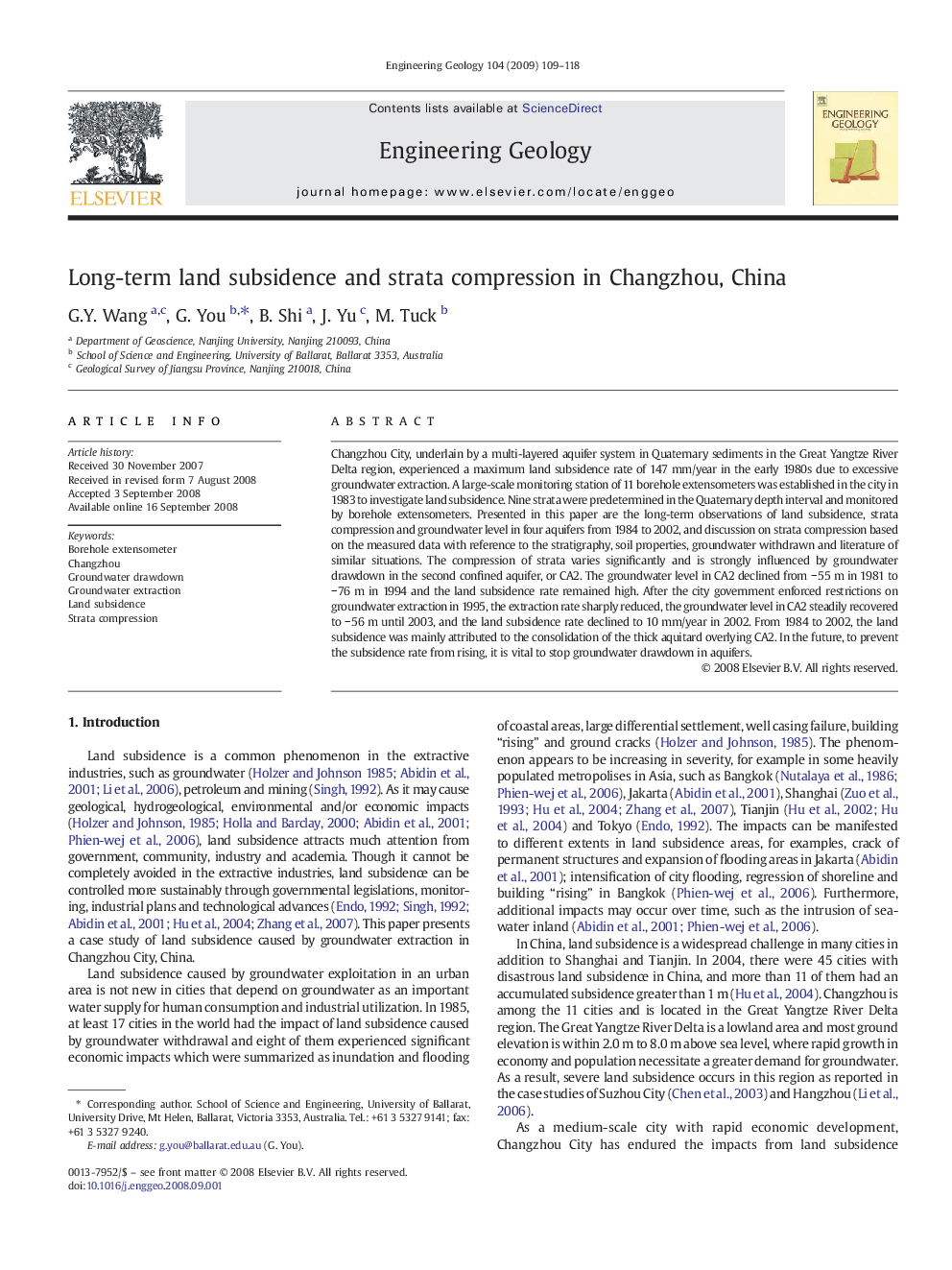| Article ID | Journal | Published Year | Pages | File Type |
|---|---|---|---|---|
| 4744814 | Engineering Geology | 2009 | 10 Pages |
Changzhou City, underlain by a multi-layered aquifer system in Quaternary sediments in the Great Yangtze River Delta region, experienced a maximum land subsidence rate of 147 mm/year in the early 1980s due to excessive groundwater extraction. A large-scale monitoring station of 11 borehole extensometers was established in the city in 1983 to investigate land subsidence. Nine strata were predetermined in the Quaternary depth interval and monitored by borehole extensometers. Presented in this paper are the long-term observations of land subsidence, strata compression and groundwater level in four aquifers from 1984 to 2002, and discussion on strata compression based on the measured data with reference to the stratigraphy, soil properties, groundwater withdrawn and literature of similar situations. The compression of strata varies significantly and is strongly influenced by groundwater drawdown in the second confined aquifer, or CA2. The groundwater level in CA2 declined from − 55 m in 1981 to − 76 m in 1994 and the land subsidence rate remained high. After the city government enforced restrictions on groundwater extraction in 1995, the extraction rate sharply reduced, the groundwater level in CA2 steadily recovered to − 56 m until 2003, and the land subsidence rate declined to 10 mm/year in 2002. From 1984 to 2002, the land subsidence was mainly attributed to the consolidation of the thick aquitard overlying CA2. In the future, to prevent the subsidence rate from rising, it is vital to stop groundwater drawdown in aquifers.
